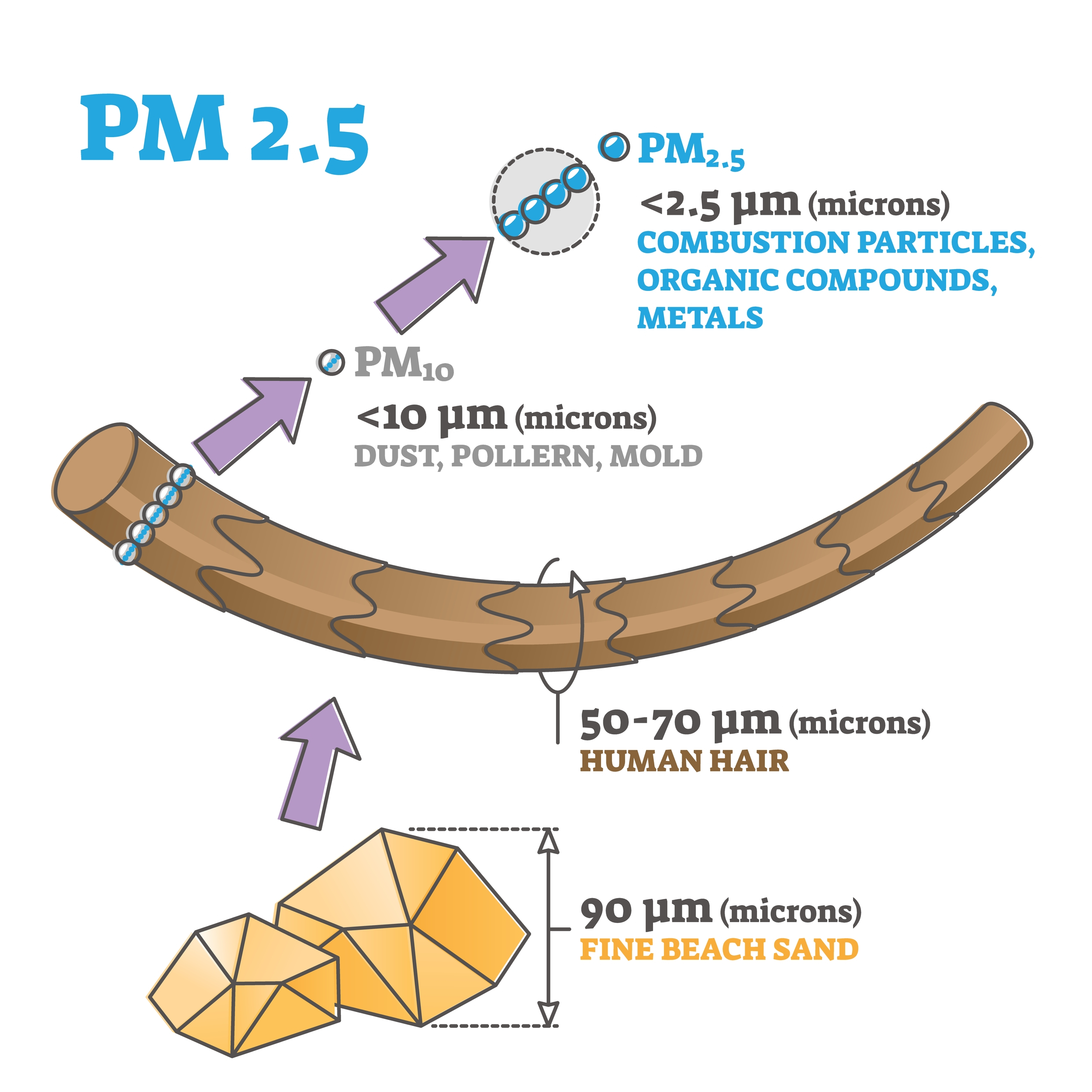Nitrogen Dioxide
Physical State: Gas
Natural Sources: Lightning, volcanoes, bacteria
Human Sources: Road vehicles, heating systems (e.g. gas central heating) in our homes
Nitrogen dioxide forms when any kind of fuel is burned. It is harmful to humans when breathed in, especially those with heart or breathing medical problems, as it can make them more unwell. Nitrogen dioxides are a part of a family called ‘Nitrogen oxides’. Nitrogen dioxide has two oxygen atoms NO2, whilst nitrogen oxide has one oxygen NO. NO is colourless and is not harmful to humans, however when it meets with oxygen in the air (which is a gas in the air we breathe) it very quickly changes and becomes NO2. So, although NO is harmless, it eventually turns into NO2 which is harmful.
Particulate Matter
Physical State: Particles and liquid droplets
Natural Sources: Volcanoes, desert  dust, wildfires, pollen, sea salt
dust, wildfires, pollen, sea salt
Human Sources: Road vehicles, wood and solid fuel burning at home
Particulate matter is the term used to describe the tiny particles and liquid droplets that are in the air. They are so small that we cannot see them. Due to their small size, they hover in the air, which means we can breathe them in through our nose and into our lungs. Particulate matter less or equal to 10 microns across (smaller than a millimetre), is referred to as PM10. Particles that are bigger than ten microns across tend to get trapped naturally in our noses or throats, before they get into our lungs. That’s what the little hairs in our nose help with.
PM2.5 stands for Particulate Matter equal to or less than 2.5 microns across; so, these are even smaller than PM10! They can travel deep into our lungs and cause harm. People who already have a heart or lung disease may find this sort of pollution makes their problem worse. These really small particles can then get into our blood stream, which then means they can affect other organs in the body.
Ozone
Physical State: Gas
Natural Sources: Upper air ozone (produced by chemical reactions with oxygen and light)
Human Sources: Road vehicles, consumer products, evaporation of paints
Ozone is naturally found in the upper air around our planet (the stratosphere) and is useful as it helps protect us from the sun by blocking harmful ultraviolet rays. At ground level however, it's harmful to breathe and can make breathing difficult, especially for people with asthma. Ozone at ground level is formed through reactions with other kinds of air pollution that we make lots of. These get mixed together in the air, and form ozone. Sunshine and heat help ozone to form, so ozone pollution is most likely to be a problem on warm, sunny days. Another unusual thing about ozone is that it’s gobbled up by nitric oxide (NO) which is usually found in towns and cities near roads. As a result, ozone pollution is more of a problem in the countryside than in our cities.

